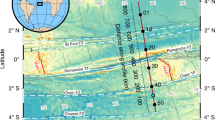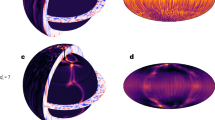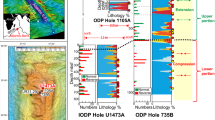Abstract
IN recent years the question of continental drift has received renewed attention mainly as a result of palæomagnetic studies. The general consensus of opinion appears now to look with favour upon this hypothesis. No attempt will be made here to summarize all the supporting evidence—rather the purpose of this communication is to point out a difficulty with such a theory. This is based in part on measurements of the flow of heat through the Earth. Certainly far too few heat-flow measurements have been made to draw any quantitative conclusions. Nevertheless, in spite of quite a large range in the measurements of the flow of heat through the ocean floors, the average flow from oceanic and continental areas is approximately the same. There are also many cases where the oceanic flow of heat is greater than the average value through the continents. These results were unexpected on the basis of the radioactive content of typical oceanic and continental crustal rocks existing near the Earth's surface.
This is a preview of subscription content, access via your institution
Access options
Subscribe to this journal
Receive 51 print issues and online access
$199.00 per year
only $3.90 per issue
Buy this article
- Purchase on SpringerLink
- Instant access to full article PDF
Prices may be subject to local taxes which are calculated during checkout
Similar content being viewed by others
References
Bullard, E. C., Maxwell, A. E., and Revelle, R., “Adv. in Geophys.”, 3, 153 (1956).
Von Herzen, R., Nature, 183, 882 (1959).
Wilson, J. Tuzo, Amer. Sci., 47, 1 (1959).
Author information
Authors and Affiliations
Rights and permissions
About this article
Cite this article
JACOBS, J. Continental Drift. Nature 185, 231–232 (1960). https://doi.org/10.1038/185231b0
Issue date:
DOI: https://doi.org/10.1038/185231b0
This article is cited by
-
The Origin of Ocean Basins and Continents
Nature (1961)
-
Some remarks on continental drift
Geofisica Pura e Applicata (1960)



